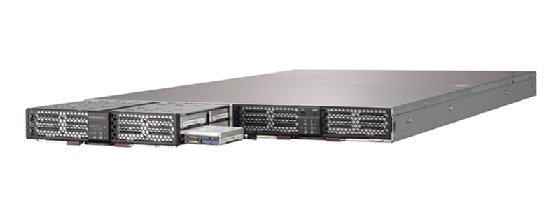
chris - Fotolia
Attala Systems tackles RoCE shortcomings for NVMe flash
Startup Attala said it can scale NVMe over RoCE across composable bare-metal racks. It has also partnered with Super Micro on NVMe JBOF and has data lake software in preview.
Attala Systems is taking steps to ease the deployment of its composable storage infrastructure.
The San Jose, Calif., startup claims it has hardened Remote Direct Memory Access over Converged Ethernet (RoCE) networking to tolerate dropped packets on lossy leaf-spine networks. Attala said the technique enables RoCE-based nonvolatile memory express (NVMe) flash storage to span clusters of bare-metal racks.
Attala customers also are testing the company's multi-tenant hot data lake software that lets disparate workload clusters access shared directories and immutable files, Attala said. That software is scheduled for general availability later in 2018.
Attala and Super Micro Computer have teamed to launch the 1U Intelligent Storage Node on the Enterprise & Data Center SSD Form Factor, an emerging standard for Intel "ruler" SSDs. The flash systems are available directly from Attala now, with a Super Micro SKU to follow.
Attala's high-performance composable infrastructure is serverless hardware. Compute, networking and storage reside on Attala custom field-programmable gate arrays (FPGAs), designed on a chipset by Intel-owned Altera. Hyperscale providers and companies with large private clouds are the primary target for the novel architecture, in which NVMe SSDs can be mapped to an individual application within a cluster. Attala started hardware shipments in August.

Data loss and retransmission
RoCE-based networking typically gets configured as one switch within a rack. This is largely due to the technological challenge of configuring a multiswitch lossy environment so it behaves as a lossless network. Ordinarily, leaf-spine networks lack a method of flow control to recover data packets lost in transit.
RDMA originated as the transport layer for InfiniBand. Later versions of RDMA technology were adapted for Ethernet networking.
CEO Taufik Ma said Attala Systems added error recovery to RoCE that enables data centers to use standard layer 2 NICs on a lossy network. Attala engineers contributed code to harden the open source Soft-RoCE driver in an effort to "unshackle" NVMe over RoCE from a single server.
"We went in and patched some of the outstanding issues in Soft-RoCE to ease deployment for customers. All they need to do is plug in our FPGA-based storage node and download some upstream Soft-RoCE driver software on the host," Ma said.
Attala's patch is part of the upstream kernel and is expected to work its way into Linux distributions, Ma said.
"There is always going to be a very low rate of packet loss when you're going across multiple racks. What Attala has done is plug in to Soft-RoCE and found a way to detect packet loss and retransmit it," said Howard Marks, the founder and chief scientist at analyst firm DeepStorage.
Composable infrastructure is a method to pool racks of IT hardware components. Compute, networking and storage are treated as separate resources that applications consume as needed. The objective is to avoid overprovisioning and unused capacity.
Composability has similarities but also key differences to converged infrastructure and hyper-convergence. Major storage vendors that have released composable infrastructure include Dell EMC, Hewlett Packard Enterprise and Western Digital Corp.
The challenge for Attala Systems is twofold: convincing the market that FPGAs represent the next wave in disaggregated architecture and gaining a foothold within major cloud data centers.
Other challengers are coming out with products that integrate NVMe over Fabrics as a layer of silicon. Kazan Networks has an ASIC-based bridge for insertion on an I/O board, while Solarflare Communications and stealth vendor Lightbits Labs are pushing NVME over TCP as a transport mechanism. Network specialist Mellanox Technologies is getting in on the action as well, developing a smart network interface controller with ARM cores to handle RAID and deduplication for just a bunch of flash (JBOF) arrays.
Marks said the market hasn't matured for composable storage products to determine which design will prevail.
"NVMe over Fabrics isn't deployed yet at large scale. When it starts to threaten SCSI, then people are going to switch whole hog to NVMe. By that time, enterprises will go with NVMe over lossless Fibre Channel, and hyperscalers will go with NVMe over TCP," Marks said.
Multi-tenant data lake use cases include AI
Ma said the Attala Data Lake software can be used as a stand-alone repository or an add-on module to extend an existing data lake. Intended use cases include write once, read many files shared by different application clusters, including AI training data, network and transaction logs.
The hot data is stored in Attala Systems' scale-out storage nodes. Requested data is integrated directly in an application's native file system.
The Attala-Super Micro EDSFF JBOF uses a cut-through chassis with four 50 Gigbabit Ethernet ports. The box accepts 32 Intel ruler SSDs. Users can slice up the capacity in increments and assign storage to different namespaces. Some of the capacity needs to be reserved for third-party RAID and data services. Attala said a sample four-node configuration provides up to 4 petabytes of raw storage, 16,384 volumes and up to 22 million IOPS.






